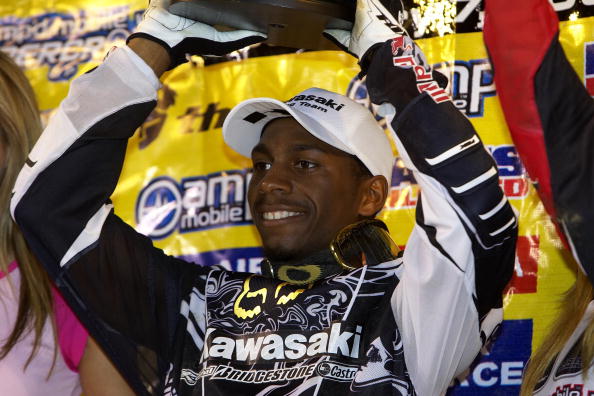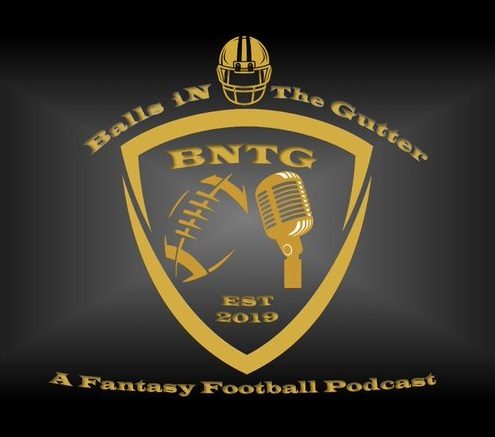68 Career total Supercross wins, 48 total Motocross wins, 7 Time Loretta Lynn’s Amateur National Motocross Champion, 2-time Motocross Des Nations Champion, 3-time National Motocross Champion, 2-time Supercross Champion of The World. The statistics are only the tip of the iceberg when you talk about James Stewart, an African American who entered a largely white sport and dominated every possible level from his amateur days and into his 14-year professional career. His style and presence gave him a Rockstar like feel anywhere he went and became one of the most beloved riders of all time. Here we look back at the career of the single most dominant African American motorsports athlete of all time, The Fastest Man on The Planet James “Bubba” Stewart.
Humble Beginnings (1985-2001)
Born in Bartow, Florida in 1985, Stewart got into the sport of motocross at a young age as his father James Stewart Sr, better known as just Big James in Moto circles, was an amateur rider in the Florida scene. He’s even on record saying he took James on a ride on his Kawasaki once they left the hospital for the first time. Like most parents of most athletes in general, Big James sacrificed so much to make sure his son could get the chance to participate in races.
He worked 70-hour weeks at a packaging plant at some point. Big James would even go as far as collecting cans and bottles to make extra money. Eventually, his sacrifices would bear fruit for his son. At four years old, James received his first-ever bike, a Yamaha YZ50cc. The bike was a Christmas gift, and for the lack of a better phrase, the gate dropped on his storied career.
As for his first number, 259 would end up being his first widely known one. The story behind it is that a childhood friend of his Tony Haynes, an African American rider who was about nine years older than James and had been racing, became paralyzed from the waist down during a crash when he was just 16 years old. Haynes, at some point, gave James his blessing to use his number. 259 is one of the most infamous numbers in motocross history. Current MXGP star Glenn Coldenhoff has run #259 since 2013, citing that James was his favorite rider growing up in an old interview with Motocross Action Magazine.
Trials and Triumph
Shortly after, James began his amateur motocross career. In just two short years, he would make his first race start. This was at the famed Loretta Lynn’s Amateur National Motocross Championship in the 4-8-year-old 51cc class. In his debut year in 1991, Stewart would finish 20th overall sporting moto finishes of 15th, 17th, and 27th. Despite a poor start on the big stage, James would come back in 1992 to finish 2nd in the 51cc class. The following year, he would win his first of 11 championships at Loretta Lynns, a record that still stands, albeit tied with Mike Alessi as of 2004.
In 1995, Stewart, after a couple of years running both Yamaha and Kawasaki bikes in separate classes, would make the full-time switch to Kawasaki. He would spend the next 12 years with Kawasaki. The final ten championships he won at Loretta Lynns were all with Team Green, racing against the likes of futures pros Davi Milsaps, Broc Hepler, Josh Grant, Justin Brayton, and many more in his god-like amateur run. After sweeping both 125cc classes in 2001, it was time for James to turn pro. In January of 2002, James Stewart would make his professional Supercross Debut with Team Chevy Trucks Kawasaki at Angel Stadium in Anaheim, California. James would proceed to have the greatest 125cc/250cc career ever.
Welcome to The Show (2002-2004)
Kawasaki was in an interesting spot once James Stewart turned pro. Ricky Carmichael, who at this point, won the last three Motocross, and last two Supercross Championships, left to ride for Factory Honda. A comp for this would be if, right now, Patrick Mahomes left Kansas City and signed with the Miami Dolphins as an example. This could have been a completely disastrous situation for Kawasaki as a brand. However, Kawasaki’s track record over the last quarter-century of finding and developing talent has been arguably second to none. Kawasaki went from Carmichael to Stewart, and then later Stewart to Ryan Villopoto, and then Villopoto to now Eli Tomac/Adam Cianciarulo, with very minimal to zero turnover at all. Unprecedented stuff.
Instant Success
With an exceptionally good team behind him, Stewart was able to find success instantly, finishing second in his first-ever Supercross start in Anaheim. A week later, at the recently demolished Qualcomm Stadium in San Diego, James Stewart would pick up his first-ever professional win at just 16 years old, which is also a record that still stands to this day. James would then pick up three more wins at Phoenix, Salt Lake City, and at the season finale in Las Vegas. Ultimately, a three-race stretch where he finished 10th or worse doomed his title hopes as he finished seven points back of eventual champion Travis Preston.
James would, however, rapidly pick up the pace as he shifted focus from Supercross to Motocross. He won an impressive ten overall events with an equally impressive 16 individual moto wins, on his way to his first-ever professional championship, beating second-place finisher Chad Reed by nearly 150 points. And again, everything that happened in 2002 was when James was 16 years old, SIXTEEN. During this season, there was an infamous situation that happened at the eighth round of the season at Unadilla in New Berlin, New York.
Stewart vs. Reed
Chad Reed claimed in the lead-up that if he could get a good start, he absolutely could beat James Stewart. Stewart responded by pulling off one of the most diabolical moves I have ever seen in professional sports during Moto 1 that day. James proceeded to get an early lead, but decided to ride lax, let Reed bye, and then blew by him a few corners later and then ran away with the moto win.
Bruce Stjernstrom, who was the team manager at the time, said in a recent video with Motocross Action Magazine that the team was concerned that something was wrong with the bike. James never gave any indication that something was wrong, which did not help the team out either. Once the team got to James at the podium, Stewart, according to Stjernstrom, told the team simply, “I just wanted to show that I could win.” If that is not the most cold-blooded move in motorsports history, I do not know what is. Unfortunately, James never got the chance in 2002 to compete in The Motocross Des Nations, which is the motocross equivalent to The Olympics for those that are unaware. The United States opted not to send a team due to various last-minute issues. The decision would conclude James Stewart’s eventful rookie year.
Second Season
Year number 2 pro for James Stewart was one of epic proportions and will likely never be topped again in the 125/250 class. Once again, he would be in the 250 West region for supercross. James would start with a second-place finish to defending champion Travis Preston. But after that runner-up performance, James went on to win every single one of the seven races remaining on the 250 west schedule that year and easily won the 2003 125cc West Supercross Championship. However, there was one final race left on his supercross schedule.
Injuries Aplenty
That year’s 125 East/West Showdown Race in Las Vegas was the final race. James would get an early lead in the main event that night but would make a mistake in a tabletop rhythm section that would cost him multiple positions. After crossing the finish line jump, James would make a major mistake in dipping the front end of the bike down too far. The mistake forced him to bail off his bike from about 10 feet in the air.
This wreck, to this day, I would say, is one of the two or three worst I have ever seen in sport. After making hard contact with the ground and sliding to a stop right by the mechanic’s area on track, James laid motionless for a good while as the medical staff rushed to his aid. The wreck would not be the last time James would have a major wreck. Crashing trying to win or win convincingly was a staple of his career.
James was the type of rider to give 150% and wreck himself out of a win rather than ride at 75 percent and get a podium. It’s what made him a phenom in moto circles. It for sure cost him multiple championships throughout his career, including the upcoming motocross season, where he had to miss the opening four rounds due to a broken collarbone from the Las Vegas wreck.
2003 Season
Despite being out of championship contention in Motocross, Stewart never took his foot off the gas pedal once in the eight rounds he ran in that year. At his first national of the year at Budds Creek in Maryland, Stewart would put on one of his all-time great performances. In the first moto that day, Stewart would show that he was without question the best rider in his class, winning by a margin of 47 seconds over eventual champion Grant Langston. His second moto performance is, however, what is remembered the most.
Stewart would get ran into about 15 feet off the start and fell, causing him to start dead last. What happened next would be in the realm of preposterous. Stewart unconsciously passed rider after rider, after rider, eventually taking him to race leader Ivan Tedesco, and he would suffer the same fate as 38 men did before him. Stewart would end up winning this second moto by six seconds over Tedesco.
The Scrub
During that Budds Creek weekend, Stewart would be performing a technique that would become a major part of motocross race craft for years to come, The Scrub. The scrub is a technique where a rider leans the bike over to the side coming to the takeoff of a jump to stay off the ground for as little time as possible to run faster lap times. While other riders tried this as well, none made it look as good or cool as Stewart did hence the alternate term “Bubba Scrub” was coined for it. Scrubs have since become vital in riding technique, and Stewart deserves a ton of credit for that.
Stewart would then go undefeated for the 2003 Motocross season, going 14-0 in 14 Motos. Despite missing about a third of the season, Stewart managed only to finish 30 points back of Grant Langston, and you would think with his otherworldly performances, he would have gotten a spot on that year’s Motocross Des Nations Team.
The Second-Choice
Well, unfortunately for James, Team USA Manager and motocross icon Roger DeCoster opted to go with that year’s second-place finisher, Ryan Hughes of Red Bull KTM, over him. Hughes would end up suffering a mechanical failure, and the United States fell just short of Team Belgium and icon Stefan Everts despite a herculean effort by Ricky Carmichael (will not be the last time either of those two gets mentioned). Stewart would then be getting prepared for his final year on a 125cc before moving to the premier class the following year in 2005.
Going into 2004, James would be allowed to switch from a 125cc two-stroke bike to a 250cc four-stroke bike to run in its place. Four-stroke bikes had slowly begun making their way into the sport due to them being more environmentally friendly and today are industry standard at the pro level. However, since two strokes weren’t outlawed yet, James decided to stay on the 125, mainly because it would be his final year in the class before making the jump to the premier class in 2005.
Stewart would end his iconic 125 with an absolute bang, sweeping that year’s 125 East schedule to win the championship. James would win all but one round on that year’s motocross schedule at Red Bud on July 4th to win the outdoor championships as well. Between Budds Creek 2003 going all the way to Budds Creek 04, Stewart won all 18 races he entered in that span.
Final Overlook
His final tally in his 125-career looked as follows: 18 Supercross Main Event wins (First All-Time), 2 Supercross Championships (Tied for second all-time, albeit with about a dozen other riders), 28 AMA National Overall Wins (First All-Time), 2 AMA Motocross Championships (Tied for second All-Time). And in 56 career 125 events, Stewart went 46-10. I do not have the words to properly express how good that is.
There will never be a rider in the modern 250cc class that will ever put numbers like that up ever again. In July of 2004, it was announced that James had signed a two-year contract extension with Kawasaki, and the brand that he was with since 1993 as a little kid, would officially take him into the premier class of Supercross about a half year later. Before I wrap up part one of this retrospective, I would be remised if I did not at least take a little time to bring up this next segment.
Harsh Realities
Of course, racism plays a role in the story of James Stewart. In James’ E:60 segment from 2009, his father, Big James, went into a story of when he and James went to a race in Alabama when he was young. Big James tried to shield his son from the harsh realities of their situation. A man walked up to him and told him, “We don’t race * here.”, to which Big James responded by saying, “Good, because I came here to race a motorcycle”, then went into how he told James that the conversation he just had was just nothing.
In the same E:60 segment, James pretty much said he did not truly get that he was different from other racers until he turned professional in 2002. “You know people would boo me for getting second and then cheer the third-place guy. It never registered to me that I’m black, they’re white, and I never paid attention to it, because I was just trying to beat them.” One notable incident of targeted racism did end up happening in the middle of his run as a professional.
In Southwick, Massachusetts, in the summer of 2007, a heckler repeatedly called him racial slurs and gave him the middle finger, all while hanging over the fencing at the edge of the track each time James would pass by. James would respond by giving the clown heckling him a thumbs up every time he passed by. He said he did this to show that he was the bigger person and that the heckler did not matter whatsoever. James has done so much good for the sport on and off the track and is a class guy.
To be Continued
And on that note, that will end part one of this retrospective on James Stewart. In part two, we will look at his final years with Kawasaki, his stints with Yamaha and Suzuki, the Creation of the Seven Brand, and his Downfall in 2015-2016.
Thanks for sticking around, and see you for part two here soon.
Check us out on our socials:
Twitter: @PTSTNews and @TalkPrimeTime
Facebook Page: Prime Time Sports Talk
Join our Facebook Group: Prime Time Sports Talk
Instagram: @ptsportstalk
Follow Jack Gaffney on Twitter @JackGaffneyPTST
Main Image Credit:








2 Responses